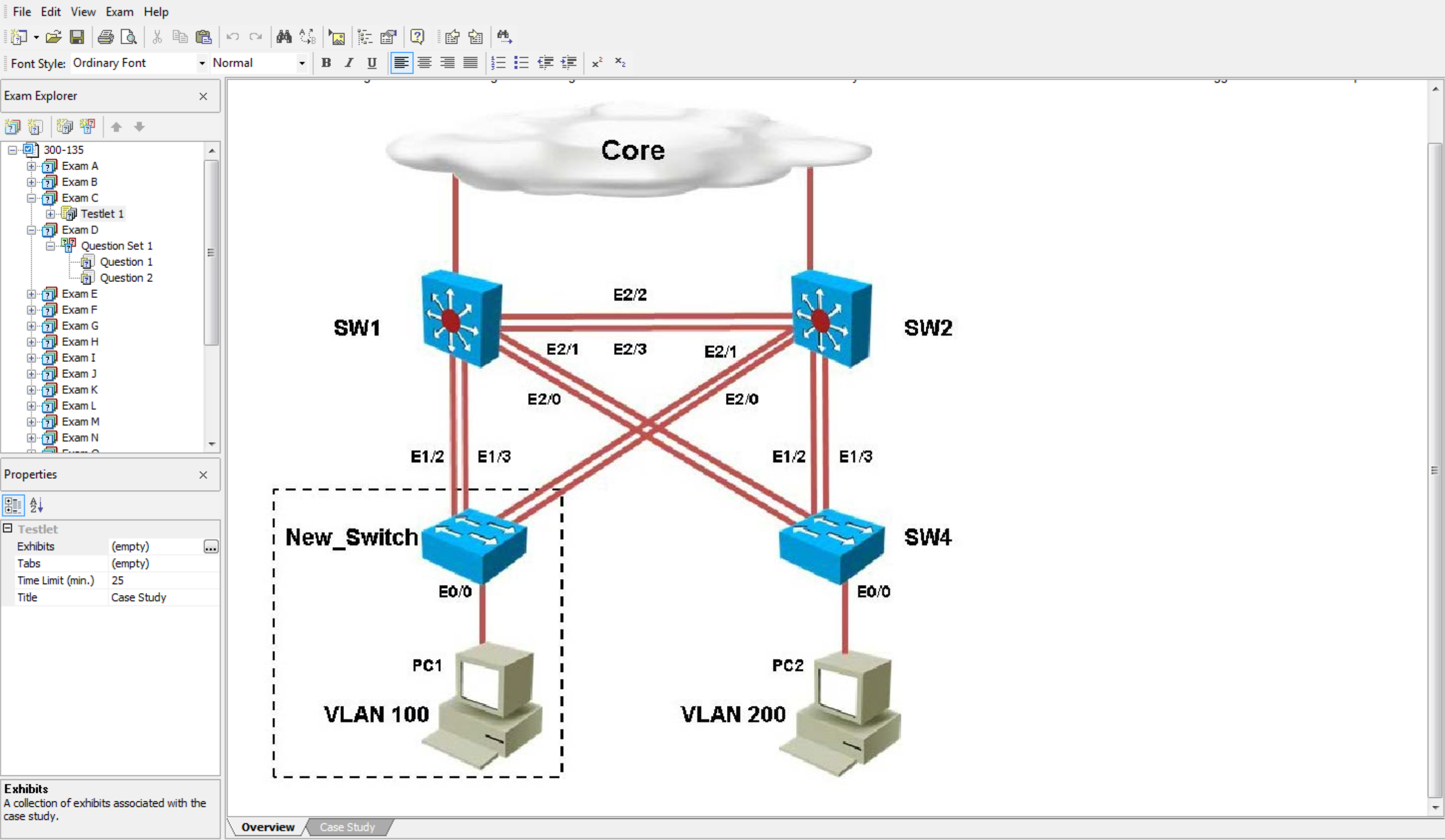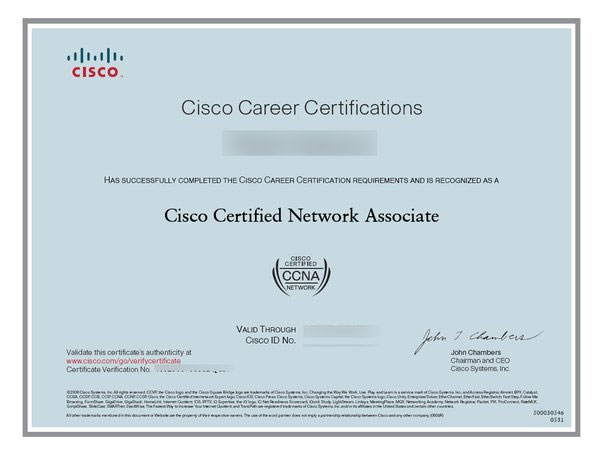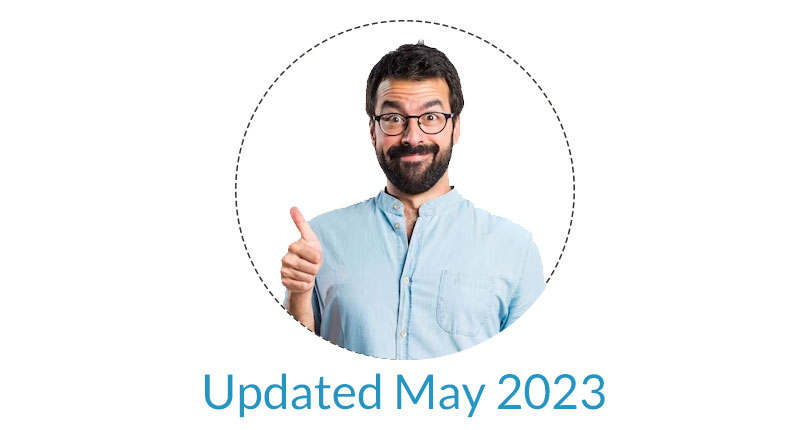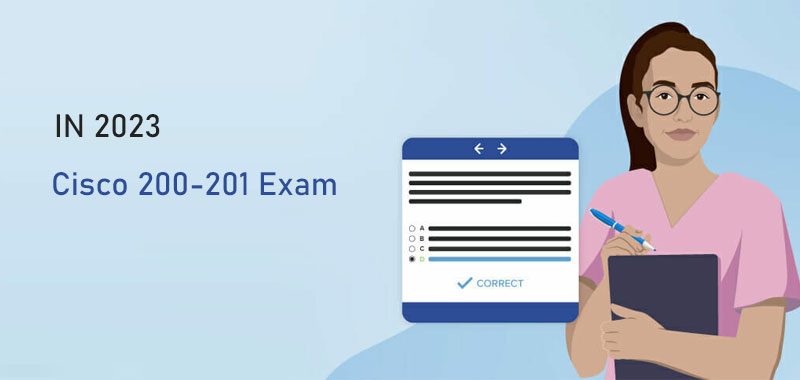2018 new Cisco CCNA 200-125 dumps exam questions and answers free download from leads4pass. Get your Cisco CCNA 200-125 dumps exam preparation questions in form of https://www.leads4pass.com/200-125.html PDF. leads4pass is the best site for providing online preparation material for 200-125 exam. 100% success and guarantee to pass Cisco 200-125 exam.
Best Cisco CCNA 200-125 dumps vce youtube demo update free shared. “CCNA Cisco Certified Network Associate CCNA (v3.0)” is the name of 200-125 CCNA – Cisco exam dumps which covers all the knowledge points of the real Cisco exam. Useful Cisco CCNA 200-125 dumps pdf training resources and study guides update free try.
Google drive latest Cisco 200-125 dumps pdf: https://drive.google.com/open?id=0B_7qiYkH83VRSnZDMkVUWDJzLWM
Google drive latest Cisco 200-105 dumps pdf: https://drive.google.com/open?id=0B_7qiYkH83VRS3BsT2duT3pTSlU
Latest Cisco 200-125 dumps exam practice questions, best Cisco 200-125 dumps exam pdf free download at leads4pass. Download the best useful Cisco CCNA 200-125 dumps vce software online to have a free try.

July 2018 New Cisco CCNA 200-125 Dumps Exam Questions And Answers (Q1-Q20)
QUESTION 1
Refer to the graphic.

A static route to the 10.5.6.0/24 network is to be configured on the HFD router. Which commands will accomplish this? (Choose two.)
A. HFD(config)# ip route 10.5.6.0 0.0.0.255 fa0/0
B. HFD(config)# ip route 10.5.6.0 0.0.0.255 10.5.4.6
C. HFD(config)# ip route 10.5.6.0 255.255.255.0 fa0/0
D. HFD(config)# ip route 10.5.6.0 255.255.255.0 10.5.4.6
E. HFD(config)# ip route 10.5.4.6 0.0.0.255 10.5.6.0
F. HFD(config)# ip route 10.5.4.6 255.255.255.0 10.5.6.0
Correct Answer: CD
Explanation:
The simple syntax of static route:
ip route destination-network-address subnet-mask {next-hop-IP-address | exit-interface} + destination-network-address: destination network address of the remote network + subnet mask: subnet mask of the destination network + next-hopIP-address: the IP address of the receiving interface on the next-hop router + exit-interface: the local interface of this router where the packets will go out In the statement “ip route 10.5.6.0 255.255.255.0 fa0/0:
+ 10.5.6.0 255.255.255.0: the destination network
+fa0/0: the exit-interface
QUESTION 2
Refer to the exhibit

What is the effect of the configuration that is shown?
A. It configures SSH globally for all logins.
B. It tells the router or switch to try to establish an SSh connection first and if that fails to use Telnet.
C. It configures the virtual terminal lines with the password 030752180500.
D. It configures a Cisco network device to use the SSH protocol on incoming communications via the virtual terminal ports.
E. It allows seven failed login attempts before the VTY lines are temporarily shutdown.
Correct Answer: D
Explanation:
Secure Shell (SSH) is a protocol which provides a secure remote access connection to network devices. Communication between the client and server is encrypted in both SSH version 1 and SSH version 2. If you want to prevent non-SSH connections, add the “transport input ssh” command under the lines to limit the router to SSH connections only.
Straight (non-SSH) Telnets are refused.
QUESTION 3
Which three elements must be used when you configure a router interface for VLAN trunking? (Choose three.)
A. one physical interface for each subinterface
B. one IP network or subnetwork for each subinterface
C. a management domain for each subinterface
D. subinterface encapsulation identifiers that match VLAN tags
E. one subinterface per VLAN
F. subinterface numbering that matches VLAN tags
Correct Answer: BDE
Explanation:
This scenario is commonly called a router on a stick. A short, well written article on this operation can be found here:
QUESTION 4
Refer to the exhibit.

What can be determined about the router from the console output?
A. No configuration file was found in NVRAM.
B. No configuration file was found in flash.
C. No configuration file was found in the PCMCIA card.
D. Configuration file is normal and will load in 15 seconds.
Correct Answer: A
Explanation:
When no startup configuration file is found in NVRAM, the System Configuration Dialog will appear to ask if we want to enter the initial configuration dialog or not.
QUESTION 5
What information does a router running a link-state protocol use to build and maintain its topological database? (Choose two.)
A. hello packets
B. SAP messages sent by other routers
C. LSAs from other routers
D. beacons received on point-to-point links
E. routing tables received from other link-state routers
F. TTL packets from designated routers
Correct Answer: AC
Explanation:
Neighbor discovery is the first step in getting a link state environment up and running. In keeping with the friendly neighbor terminology, a Hello protocol is used for this step. 200-125 dumps The protocol will define a Hello packet format and a procedure for exchanging the packets and processing the information the packets contain.
After the adjacencies are established, the routers may begin sending out LSAs. As the term flooding implies, the advertisements are sent to every neighbor. In turn, each received LSA is copied and forwarded to every neighbor except the one that sent the LSA.
QUESTION 6
Refer to the exhibit.

The technician wants to upload a new IOS in the router while keeping the existing IOS. What is the maximum size of an IOS file that could be loaded if the original IOS is also kept in flash?
A. 3 MB
B. 4 MB
C. 5 MB
D. 7 MB
E. 8 MB
Correct Answer: B
Explanation:
In this example, there are a total of 8 MB, but 3.8 are being used already, so another file as large as 4MB can be loaded in addition to the original file.
QUESTION 7
Which command displays CPU utilization?
A. show protocols
B. show process
C. show system
D. show version
Correct Answer: B
Explanation:
The “show process” (in fact, the full command is “show processes”) command gives us lots of information about each process but in fact it is not easy to read. Below shows the output of this command (some next pages are omitted).

A more friendly way to check the CPU utilization is the command “show processes cpu history”, in which the total CPU usage on the router over a period of time: one minute, one hour, and 72 hours are clearly shown:

+ The Y-axis of the graph is the CPU utilization.
+ The X-axis of the graph is the increment within the period displayed in the graph. For example, from the last graph (last 72 hours) we learn that the highest CPU utilization within 72 hours is 37% about six hours ago.
QUESTION 8
A router has learned three possible routes that could be used to reach a destination network. One route is from EIGRP and has a composite metric of 20514560. Another route is from OSPF with a metric of 782. The last is from RIPv2 and
has a metric of 4. Which route or routes will the router install in the routing table?
A. the OSPF route
B. the EIGRP route
C. the RIPv2 route
D. all three routes
E. the OSPF and RIPv2 routes
Correct Answer: B
Explanation:
When one route is advertised by more than one routing protocol, the router will choose to use the routing protocol which has lowest Administrative Distance. The Administrative Distances of popular routing protocols are listed below:

QUESTION 9
Refer to the exhibit.

C-router is to be used as a “router-on-a-stick” to route between the VLANs. All the interfaces have been properly configured and IP routing is operational. The hosts in the VLANs have been configured with the appropriate default gateway.
What is true about this configuration?
A. These commands need to be added to the configuration:
C-router(config)# router eigrp 123
C-router(config-router)# network 172.19.0.0
B. These commands need to be added to the configuration:
C-router(config)# router ospf 1
C-router(config-router)# network 172.19.0.0 0.0.3.255 area 0
C. These commands need to be added to the configuration:
C-router(config)# router rip
C-router(config-router)# network 172.19.0.0
D. No further routing configuration is required.
Correct Answer: D
Explanation:
Since all the same router (C-router) is the default gateway for all three VLANs, all traffic destined to a different VLA will be sent to the C-router. 200-125 dumps The C-router will have knowledge of all three networks since they will appear as directly connected in the routing table. Since the C-router already knows how to get to all three networks, no routing protocols need to be configured.
QUESTION 10
If IP routing is enabled, which two commands set the gateway of last resort to the default gateway? (Choose two.)
A. ip default-gateway 0.0.0.0
B. ip route 172.16.2.1 0.0.0.0 0.0.0.0
C. ip default-network 0.0.0.0
D. ip default-route 0.0.0.0 0.0.0.0 172.16.2.1
E. ip route 0.0.0.0 0.0.0.0 172.16.2.1
Correct Answer: CE
Explanation:
Both the “ip default-network” and “ip route 0.0.0.0 0.0.0.0 (next hop)” commands can be used to set the default gateway in a Cisco router.
QUESTION 11
Which two statements about the OSPF Router ID are true? (Choose two.)
A. It identifies the source of a Type 1 LSA.
B. It should be the same on all routers in an OSPF routing instance.
C. By default, the lowest IP address on the router becomes the OSPF Router ID.
D. The router automatically chooses the IP address of a loopback as the OSPF Router ID.
E. It is created using the MAC Address of the loopback interface.
Correct Answer: AD
Explanation:
r120#show ip ospf data
OSPF Router with ID (10.0.0.120) (Process ID 1)
Next, who are the other routers in our area?
Router Link States (Area 1)
Link IDADV RouterAgeSeq#ChecksumLink count
10.0.0.11110.0.0.1116000x8000023A 0x0092B31
10.0.0.11210.0.0.11212460×80000234 0x009CAC1
10.0.0.11310.0.0.1131480x8000022C0x0043993
10.0.0.12010.0.0.1201520x800002400x0046CB1
We can see OSPF Router ID will be used as source of Type 1 LSA. Also the router will chose the highest loopback interface as its OSPF router ID (if available).
QUESTION 12
Refer to the exhibit.

The speed of all serial links is E1 and the speed of all Ethernet links is 100 Mb/s. A static route will be established on the Manchester router to direct traffic toward the Internet over the most direct path available. What configuration on the
Manchester router will establish a route toward the Internet for traffic that originates from workstations on the Manchester LAN?
A. ip route 0.0.0.0 255.255.255.0 172.16.100.2
B. ip route 0.0.0.0 0.0.0.0 128.107.1.1
C. ip route 0.0.0.0 255.255.255.252 128.107.1.1
D. ip route 0.0.0.0 0.0.0.0 172.16.100.1
E. ip route 0.0.0.0 0.0.0.0 172.16.100.2
F. ip route 0.0.0.0 255.255.255.255 172.16.100.2
Correct Answer: E
Explanation:
We use default routing to send packets with a remote destination network not in the routing table to the next-hop router. You should generally only use default routing on stub networks–those with only one exit path out of the network.
According to exhibit, all traffic towards Internet that originates from workstations should forward to Router R1.
Syntax for default route is:
ip route <Remote_Network> <Netmask> <Next_Hop_Address>.
QUESTION 13
Which command reveals the last method used to powercycle a router?
A. show reload
B. show boot
C. show running-config
D. show version
Correct Answer: D
Explanation:
The “show version” command can be used to show the last method to powercycle (reset) a router.

QUESTION 14
Why do large OSPF networks use a hierarchical design? (Choose three.)
A. to decrease latency by increasing bandwidth
B. to reduce routing overhead
C. to speed up convergence
D. to confine network instability to single areas of the network
E. to reduce the complexity of router configuration
F. to lower costs by replacing routers with distribution layer switches
Correct Answer: BCD
Explanation:
OSPF implements a two-tier hierarchical routing model that uses a core or backbone tier known as area zero (0). Attached to that backbone via area border routers (ABRs) are a number of secondary tier areas. The hierarchical approach is used to achieve the following:
Rapid convergence because of link and/or switch failures ?
Deterministic traffic recovery
?
Scalable and manageable routing hierarchy, reduced routing overhead.
QUESTION 15
Refer to the exhibit.

Which of these statements correctly describes the state of the switch once the boot process has been completed?
A. As FastEthernet0/12 will be the last to come up, it will be blocked by STP.
B. Remote access management of this switch will not be possible without configuration change.
C. More VLANs will need to be created for this switch.
D. The switch will need a different IOS code in order to support VLANs and STP.
Correct Answer: B
Explanation:
Notice the line, which says “Interface VLAN1, changed state to administratively down”. This shows that VLAN1 is shut down. Hence remote management of this switch is not possible unless VLAN1 is brought back up. Since VLAN1 is the only interface shown in the output, you have to assume that no other VLAN interface has been configured with an IP Address.
QUESTION 16
Refer to the exhibit.

Based on the exhibited routing table, how will packets from a host within the 192.168.10.192/26 LAN be forwarded to 192.168.10.1?
A. The router will forward packets from R3 to R2 to R1.
B. The router will forward packets from R3 to R1 to R2.
C. The router will forward packets from R3 to R2 to R1 AND from R3 to R1.
D. The router will forward packets from R3 to R1.
Correct Answer: C
Explanation:
From the routing table we learn that network 192.168.10.0/30 is learned via 2 equal-cost paths (192.168.10.9 &192.168.10.5) -> traffic to this network will be load-balancing.
QUESTION 17
What are two enhancements that OSPFv3 supports over OSPFv2? 200-125 dumps (Choose two.)
A. It requires the use of ARP.
B. It can support multiple IPv6 subnets on a single link.
C. It supports up to 2 instances of OSPFv3 over a common link.
D. It routes over links rather than over networks.
Correct Answer: BD
Explanation:
Here is a list of the differences between OSPFv2 and OSPFv3:
They use different address families (OSPFv2 is for IPv4-only, OSPFv3 can be used for IPv6-only or both protocols
OSPFv3 introduces new LSA types
OSPFv3 has different packet format
OSPFv3 uses different flooding scope bits (U/S2/S1) OSPFv3 adjacencies are formed over link-local IPv6 communications OSPFv3 runs per-link rather than per-subnet
OSPFv3 supports multiple instances on a single link, Interfaces can have multiple IPv6 addresses
OSPFv3 uses multicast addresses FF02::5 (all OSPF routers), FF02::6 (all OSPF DRs)
OSPFv3 Neighbor Authentication done with IPsec (AH) OSPFv2 Router ID (RID) must be manually configured, still a 32-bit number
QUESTION 18
Refer to the exhibit.

The company uses EIGRP as the routing protocol. What path will packets take from a host on the 192.168.10.192/26 network to a host on the LAN attached to router R1?
A. The path of the packets will be R3 to R2 to R1.
B. The path of the packets will be R3 to R1 to R2.
C. The path of the packets will be both R3 to R2 to R1 AND R3 to R1.
D. The path of the packets will be R3 to R1.
Correct Answer: D
Explanation:
Host on the LAN attached to router R1 belongs to 192.168.10.64/26 subnet. From the output of the routing table of R3 we learn this network can be reach via 192.168.10.9, which is an IP address in 192.168.10.8/30 network (the network between R1 & R3) -> packets destined for 192.168.10.64 will be routed from R3 -> R1 -> LAN on R1.
QUESTION 19
A Cisco router is booting and has just completed the POST process. It is now ready to find and load an IOS image. What function does the router perform next?
A. It checks the configuration register.
B. It attempts to boot from a TFTP server.
C. It loads the first image file in flash memory.
D. It inspects the configuration file in NVRAM for boot instructions.
Correct Answer: A
Explanation:
Default (normal) Boot Sequence
Power on Router – Router does POST – Bootstrap starts IOS load – Check configuration register to see what mode the router should boot up in (usually 0x2102 to read startup- config in NVRAM / or 0x2142 to start in “setup-mode”) – check the startup-config file in NVRAM for boot-system commands – load IOS from Flash.
QUESTION 20
Refer to the exhibit.

According to the routing table, where will the router send a packet destined for 10.1.5.65?
A. 10.1.1.2
B. 10.1.2.2
C. 10.1.3.3
D. 10.1.4.4
Correct Answer: C
Explanation:
The destination IP address 10.1.5.65 belongs to 10.1.5.64/28, 10.1.5.64/29 & 10.1.5.64/27 subnets but the “longest prefix match” algorithm will choose the most specific subnet mask -> the prefix “/29 will be chosen to route the packet.
Therefore the next-hop should be 10.1.3.3 ->.
Google drive latest Cisco 200-125 dumps pdf: https://drive.google.com/open?id=0B_7qiYkH83VRSnZDMkVUWDJzLWM
Google drive latest Cisco 200-105 dumps pdf: https://drive.google.com/open?id=0B_7qiYkH83VRS3BsT2duT3pTSlU
Useful Cisco CCNA 200-125 dumps exam practice materials in PDF format download free try from leads4pass. The best and most updated latest Cisco CCNA https://www.leads4pass.com/200-125.html dumps pdf training resources which are the best for clearing 200-125 exam test, and to get certified by Cisco CCNA, download one of the many PDF readers that are available for free with high pass rate.
High quality Cisco CCNA 200-125 dumps vce youtube: https://youtu.be/A3QXusOqdgA


